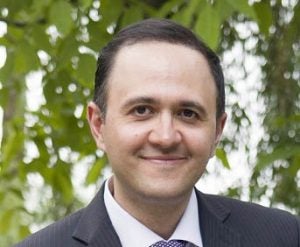ECU team to create computer models of infected lungs
A multidisciplinary team of East Carolina University researchers is hoping to gain new insights into the mechanical aspects of breathing and mechanical ventilation based on imaging data from hospitalized COVID-19 patients.
The group of engineers from the College of Engineering and Technology and physicians from the Brody School of Medicine received a Rapid Response Research (RAPID) grant for $115,777 from the National Science Foundation to create detailed computer models of infected and inflamed lungs.

Dr. Ali Vahdati, assistant professor of the Department of Engineering, is the principal investigator of the grant.
“The main scientific objective of the grant is to improve our foundational knowledge of lung mechanics, how our lungs basically operate,” said Dr. Ali Vahdati, assistant professor of the Department of Engineering and principal investigator of the grant. “We are using imaging data from COVID-19 patients to better understand how the lung works in a disease state.”
Vahdati said that while mechanical ventilation is often used, scientific understanding of how it works on the lungs is sparse. Vahdati and his team plan to use imaging data of lungs from COVID-19 patients to create detailed computer models. Those models will be used to simulate a digital twin of COVID-19 infected lungs on mechanical ventilation. That will help increase the understanding of lung function in both healthy and diseased states, Vahdati said.
Dr. Stephanie George, associate professor in the Department of Engineering, and Drs. Veeranna Maddipati, Andrew Ju, Jennifer Stahl and Sean Peach, all faculty with the Brody School of Medicine, are collaborators on the research project. Two graduate students will also be part of the team.
Vahdati points out that the computer models developed through the research will be used as instructional material for multiple courses at ECU, thus introducing students, especially low-income and first-generation college students from rural areas, to cutting-edge modeling and simulation techniques.
“In addition to advancing our fundamental knowledge of lung dynamics, this research experience can have a profound impact on these students’ interest in foundational research and career goals,” Vahdati said. “I appreciate the support and the opportunity provided for our team and students by the NSF’s Directorate for Engineering and Division of Civil, Mechanical and Manufacturing Innovation.”
The research project is based upon work supported by the National Science Foundation under Grant No. 216934. It is expected to last until June of 2021.